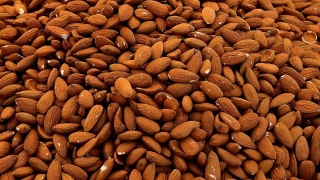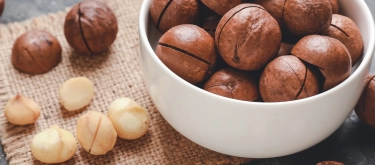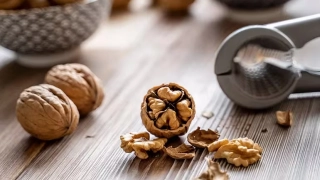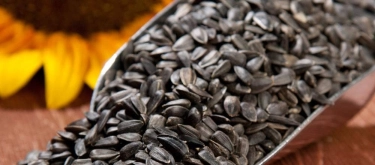Cashew: Taste Profile, Aroma, Benefits and Health Risks
Cashew (Anacardium occidentale) is a popular nut native to Brazil but now cultivated in many tropical regions, particularly India, Vietnam, and Africa. Despite its widespread culinary use, cashew is technically a seed attached to the cashew apple, a fruit that is less commonly consumed outside its native areas. Known for its creamy, buttery taste and versatility, cashew has become an integral part of global cuisines, from snacks to sauces and desserts.
Cashews may trigger allergic reactions similar to other tree nuts, including skin rash, digestive discomfort, and in severe cases, anaphylaxis. People with nut allergies should avoid cashews. Excessive consumption may also cause digestive upset due to high fat content.
What does Cashew taste like?
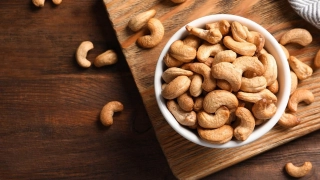
Complete Sensory Description
-
Taste: Cashew has a distinctly mild, creamy, and slightly sweet flavor with a subtle buttery undertone. Unlike stronger-flavored nuts such as walnuts or hazelnuts, cashew is delicate and less bitter, making it appealing even to those who typically dislike nuts.
-
Aroma: A gentle nutty scent with faint notes of cream and sweetness, especially noticeable when roasted.
-
Texture: Smooth and soft compared to most nuts, cashew breaks easily when chewed and creates a creamy mouthfeel due to its high oil content.
-
Appearance: Cashew kernels are kidney-shaped, ivory to pale beige in color, with a smooth surface. When roasted, they develop a golden tint.
In-depth Flavor Analysis
The mild, buttery sweetness of cashew comes from its balance of sugars, amino acids, and lipids. Roasting enhances its flavor through Maillard reactions, producing compounds such as pyrazines that add nutty and roasted notes. The soft texture and creamy mouthfeel are due to cashew’s high monounsaturated fat content, particularly oleic acid, similar to that found in olive oil.
Variations arise from:
-
Roasting Level: Light roasting preserves sweetness, while medium and dark roasting bring out caramelized, slightly savory notes.
-
Processing: Salted cashews emphasize their sweetness by contrast, while honey-roasted versions amplify their dessert-like qualities.
-
Pairing Influence: Cashews readily absorb flavors of spices and sauces, making them ideal for both sweet (candies, desserts) and savory (curries, stir-fries) applications.
Varieties and Culinary Applications
-
Varieties: Cashews are mainly categorized by size and grade (whole, split, pieces), rather than distinct botanical varieties. India and Vietnam dominate global cashew production.
-
Culinary Uses:
-
Ground into cashew butter or paste for spreads and sauces.
-
A base for vegan dairy alternatives such as cashew milk, cheese, and cream.
-
Common in Indian curries (e.g., korma), stir-fried Asian dishes, and desserts like ice cream and confectionery.
-
Eaten roasted and salted as a snack.
-
Used in baking for cookies, cakes, and granola.
-
Selection and Storage
Choose cashews that are uniform in size, ivory or light beige in color, and free from dark spots or shriveling. Avoid cashews with a rancid smell, as they spoil quickly due to their oil content. Store in airtight containers, preferably refrigerated, to preserve freshness and prevent oxidation.
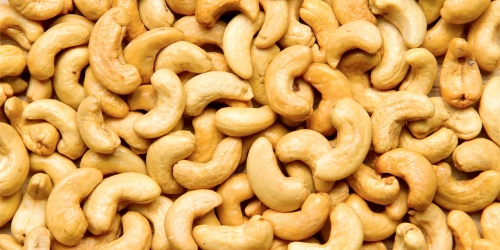
Nutritional Insights
Cashews are nutrient-dense, rich in protein, healthy fats, and dietary fiber. They provide significant amounts of magnesium, copper, phosphorus, zinc, and iron. Their high content of monounsaturated fats supports cardiovascular health, while plant-based protein aids muscle repair and satiety. Cashews also supply tryptophan, which may support mood regulation.
Expert Insights & Culinary Tips
Chefs often use cashews to create creamy textures without dairy. For example, soaked cashews can be blended into sauces that mimic cream. Roasted cashews can add crunch to salads and stir-fries, while ground cashew paste gives Indian gravies their characteristic body and richness. Pair cashews with chocolate, caramel, and dried fruits for desserts, or with spices like cumin and chili in savory dishes.
Interesting and Curious Facts
-
Cashew shells contain urushiol, the same toxic compound found in poison ivy, which is why cashews are never sold in their shells.
-
The cashew apple, the fruit attached to the nut, is edible and used to make juices, jams, and even alcoholic beverages in Brazil and parts of Africa.
-
Cashew production is labor-intensive, which contributes to their relatively high price compared to other nuts.
Harm and Dietary Considerations
-
Potential for severe nut allergies.
-
Excessive intake may lead to weight gain due to high calorie density.
-
Raw cashews sold in stores are usually steamed to remove urushiol — truly raw cashews are toxic and unsafe to eat.
-
Pregnant women may consume cashews in moderation unless they have nut allergies.
Religious Dietary Considerations
Cashew is plant-based and suitable for vegetarian, vegan, kosher, and halal diets. It poses no restrictions in major religious dietary frameworks.
Final Thoughts & Sensory Journey
Cashew’s creamy sweetness, gentle aroma, and soft texture make it unique among nuts. It is both indulgent and versatile, equally at home in desserts and savory dishes. More than just a snack, cashew is a bridge between luxury and everyday nutrition, balancing pleasure with health.
Resources
-
Rosengarten F. The Book of Edible Nuts. Dover Publications, 2004. ISBN: 9780486201976
-
Alasalvar C., Shahidi F. Tree Nuts: Composition, Phytochemicals, and Health Effects. CRC Press, 2008. ISBN: 9780849397303
-
Salunkhe D.K., Kadam S.S. Handbook of World Food Legumes and Nuts. CRC Press, 1998. ISBN: 9780824799330
